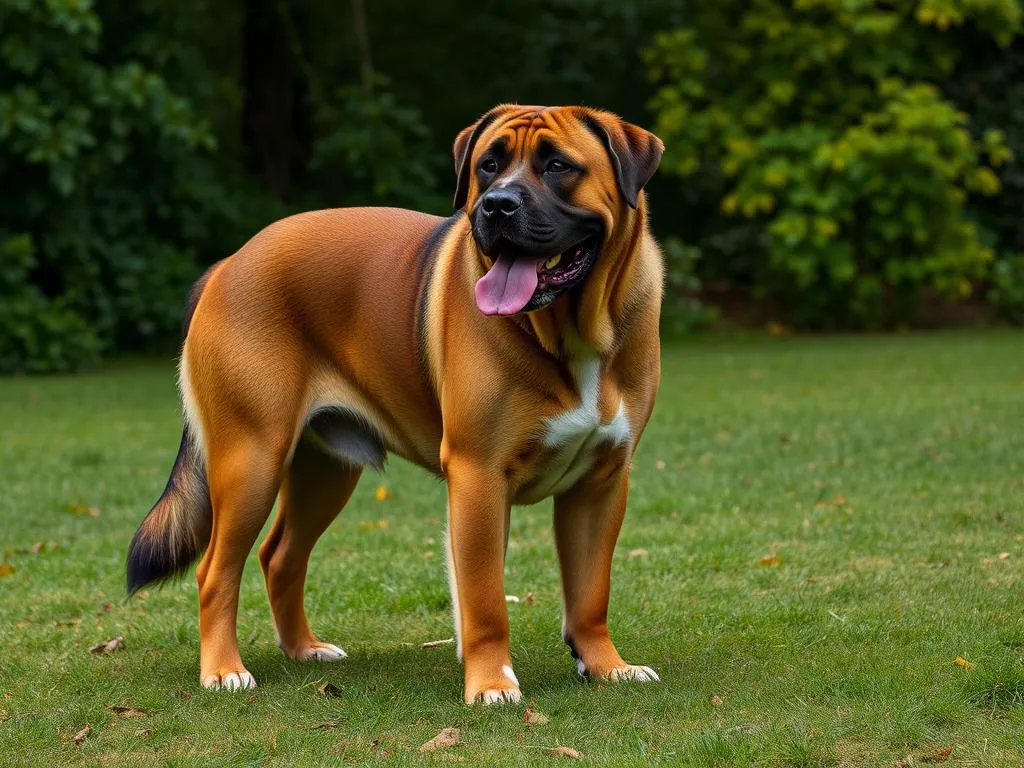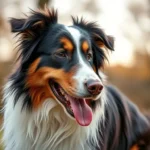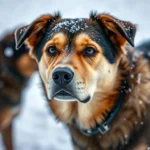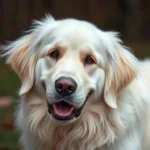
Giant dog breeds are truly magnificent creatures, captivating dog lovers with their impressive size and gentle demeanor. Generally, giant dog breeds are defined as dogs that weigh over 100 pounds and stand more than 24 inches tall at the shoulder. Understanding these breeds is crucial for potential dog owners, as the care requirements and characteristics of giant breeds can differ significantly from smaller dogs. This guide aims to provide a thorough overview of various giant dog breeds, their unique traits, and what it takes to care for them effectively.
Characteristics of Giant Dog Breeds
Physical Traits
When compared to standard breeds, giant dog breeds stand out not only in size but also in their physical appearance. Most giant breeds have a robust, muscular build, often accompanied by large heads and thick necks. Common physical features include:
- Coat Types: They can range from short-haired to long-haired breeds, and some have double coats for added warmth.
- Ear Shapes: Many have floppy ears, while others, like the Great Dane, have erect ears, giving them a regal appearance.
Temperament
The temperament of giant dog breeds is generally characterized by a friendly and protective nature. While they can be gentle giants, the temperament can vary among different breeds. For instance, some may be more reserved, while others are exceptionally social. Common traits include:
- Affectionate: Many enjoy being around their families and are known for their loyalty.
- Protective: They often act as natural guardians, making them excellent watchdogs.
Lifespan
The average lifespan of giant dog breeds tends to be shorter compared to smaller breeds, typically ranging from 6 to 12 years. Factors that can influence their longevity include:
- Genetics: Certain breeds may have predispositions to health issues.
- Care: Regular veterinary check-ups, a balanced diet, and proper exercise can enhance their lifespan.
Popular Giant Dog Breeds
Great Dane
Originating from Germany, the Great Dane is often referred to as the “Apollo of dogs” due to its impressive stature.
- Size Specifications: Adult Great Danes typically weigh between 110 to 175 pounds and can stand 28 to 34 inches tall.
- Temperament: Known for their friendly and affectionate nature, Great Danes are great with children and other pets.
- Care Requirements:
- Exercise Needs: They require moderate exercise, including daily walks and playtime.
- Grooming Requirements: Their short coat requires minimal grooming; a weekly brush is typically sufficient.
Mastiff
Mastiffs are an ancient breed known for their massive size and gentle temperament.
- Different Types: The English Mastiff, Bull Mastiff, and Neapolitan Mastiff each have unique characteristics but share similar size specifications.
- Size Specifications: Mastiffs can weigh between 120 to 230 pounds and stand around 27 to 30 inches tall.
- Temperament: They are loyal and protective but also calm and friendly.
- Care Requirements:
- Exercise Needs: Regular walks and gentle play are essential; they should avoid excessive exercise due to their large size.
- Grooming Requirements: Their short coat requires minimal grooming.
Saint Bernard
Famous for their rescue work in the Swiss Alps, the Saint Bernard is a giant breed with a heart of gold.
- Size Specifications: They typically weigh between 120 to 180 pounds and stand about 26 to 30 inches tall.
- Temperament: Saint Bernards are known for being gentle, friendly, and good with children.
- Care Requirements:
- Exercise Needs: Moderate exercise is vital; they enjoy walks and gentle play.
- Grooming Requirements: Their thick coat requires regular brushing, especially during shedding seasons.
Newfoundland
Newfoundlands are renowned for their swimming ability and gentle disposition.
- Size Specifications: They can weigh between 100 to 150 pounds and stand 26 to 28 inches tall.
- Temperament: Known for being sweet-natured and great with children, Newfoundlands are often referred to as “gentle giants.”
- Care Requirements:
- Exercise Needs: Daily walks and swimming are excellent forms of exercise for this breed.
- Grooming Requirements: Their water-resistant coat requires regular brushing to prevent matting.
Irish Wolfhound
The Irish Wolfhound is one of the tallest dog breeds, known for both its size and grace.
- Size Specifications: They can weigh between 90 to 150 pounds and stand 30 to 34 inches tall.
- Temperament: Despite their size, they are known for being gentle, affectionate, and good with families.
- Care Requirements:
- Exercise Needs: They require moderate exercise, including walks and playtime.
- Grooming Requirements: Their wiry coat requires occasional grooming.
Other Notable Breeds
In addition to the aforementioned breeds, several other giant dog breeds deserve mention:
- Leonberger: Known for their lion-like appearance and friendly nature.
- Tibetan Mastiff: A protective breed with a thick, luxurious coat.
- Giant Schnauzer: A robust breed known for its intelligence and versatility.
Considerations Before Getting a Giant Dog Breed
Space Requirements
When considering a giant dog breed, it’s essential to assess your living environment.
- Ideal Living Environments: While some can adapt to apartment living, they thrive best in homes with ample space.
- Outdoor Space Needs: A yard is highly beneficial for exercise and play.
Exercise Needs
Giant dog breeds require significant exercise to maintain their health.
- Daily Exercise Requirements: Most need at least 30 to 60 minutes of exercise each day.
- Types of Activities: Long walks, swimming, and gentle play are ideal activities for these breeds.
Health Concerns
Owning a giant dog breed comes with certain health considerations.
- Common Health Issues: Many giant breeds are prone to conditions such as hip dysplasia, heart problems, and bloat.
- Importance of Regular Vet Check-ups: Regular veterinary visits are crucial for early detection and treatment of potential health issues.
Financial Commitment
The financial aspect of owning a giant dog breed can be significant.
- Initial Costs: Adoption or purchase fees can range widely based on the breed.
- Ongoing Costs: Food, grooming, and veterinary care can add up, with larger dogs typically requiring more food and resources.
Time Commitment
Caring for a giant dog breed requires a considerable time commitment.
- Training and Socialization Needs: Early training and socialization are critical to ensure well-adjusted pets.
- Daily Care and Attention Requirements: These breeds thrive on companionship and require regular interaction.
Training and Socialization
Importance of Early Training
Starting training early is crucial for giant dog breeds.
- Benefits of Starting Training Young: Early training helps establish good behavior patterns and social skills.
- Recommended Training Techniques: Positive reinforcement methods work best for these sensitive breeds.
Socialization Tips
Socialization is vital for the development of well-rounded dogs.
- Importance of Socializing Giant Breeds: Exposure to various environments, people, and other animals helps them become more adaptable.
- Strategies for Effective Socialization: Gradual introductions to new experiences and consistent exposure are key.
Behavioral Challenges
While giant dog breeds are often gentle, they can face certain behavioral challenges.
- Common Behavioral Issues: These may include stubbornness, separation anxiety, or fearfulness.
- Solutions and Training Resources: Engaging with professional trainers or attending obedience classes can help address these issues.
Conclusion
Understanding giant dog breeds is invaluable for potential owners. Each breed comes with its unique characteristics and care requirements, making thorough research essential. By matching breed traits with your lifestyle, you can ensure a harmonious relationship with your giant companion. With their loving nature and imposing presence, giant dog breeds can bring immense joy and companionship to your life.
FAQs
What defines a giant dog breed?
A giant dog breed is typically defined by its weight (over 100 pounds) and height (over 24 inches at the shoulder).
How much exercise do giant dog breeds need?
Most giant dog breeds require at least 30 to 60 minutes of exercise daily, including walks and playtime.
Are giant dog breeds good with children?
Many giant dog breeds are known for their affectionate and gentle nature, making them suitable companions for children.
What is the best giant dog breed for first-time owners?
Breeds like the Great Dane and Saint Bernard are often recommended for first-time owners due to their friendly and gentle personalities.
How much do giant dog breeds typically eat?
Giant dog breeds may require 4 to 10 cups of high-quality dog food daily, depending on their size and activity level.









